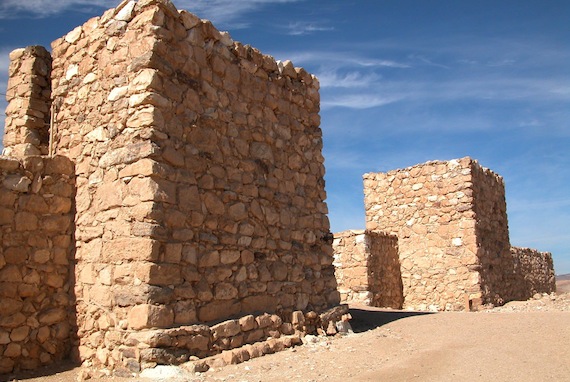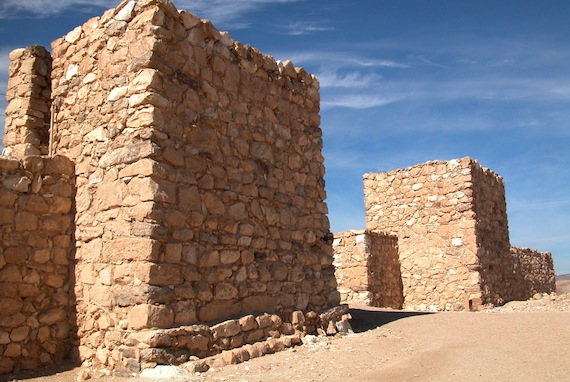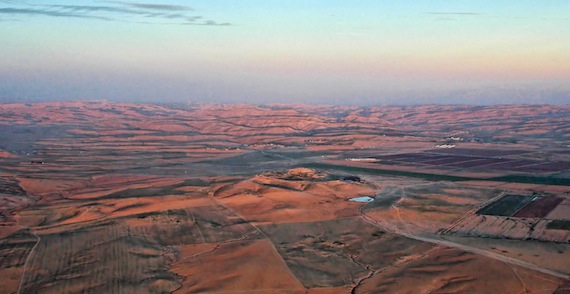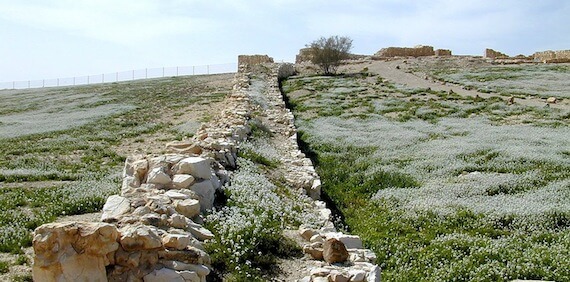3 min read
Tel Arad—Israel’s Point of Impatience with God
How Traveling Along The Path Of The Unknown Gives Us The Chance To Give God Greater Glory.
Admin
:
Jun 24, 2018 11:00:53 PM

At Tel Arad, the whole land of Canaan lay before the Hebrews. They had waited and wandered forty years in the wilderness. The Promised Land was theirs for the taking. Right there before them!

(Photo: Arad Israelite fort, courtesy of Pictorial Library of Bible Lands)
Instead, God led the Hebrews on a major detour.
Tel Arad in Israel’s Negev offers many benefits to its visitors. It’s an oasis of ancient archaeology. It gives a rare glimpse of Judah’s idolatry.
And it speaks to us today of the need to tap the brakes on our impatience with God’s leading.
Tel Arad’s Strategic Location
Standing on the ruins of Tel Arad, a person can gaze across the vast basin of the eastern Negev. It’s no surprise that Arad remained continually occupied and resettled through the centuries.
- As travelers brought bitumen from the Dead Sea or copper from Sinai, they would traverse the main trade route that stretched from Judah to Edom. The ancient city of Arad controlled this highway.
- The descendants of Moses’ father-in-law, Jethro, would later leave Jericho and resettle “in the south of Arad” (Judges 1:16). This barren wilderness area likely refers to the Judean plateau that lies at the head of the Wadi Seyyal, which drains down toward Masada.
- Later, even the Romans used the site as a means of guarding the border. The city remained strategic until the Islamic occupation of the 7th-century AD.

(Arad aerial from the southwest, courtesy of Pictorial Library of Bible Lands)
If Rocks Could Talk
Two levels of ruins represent different eras. The lower city of Tel Arad offers a rare glimpse at ruins that pre-date Abraham. Tel Arad offers the most abundant, biblical archaeological site in the Negev.
In an area of Israel that offers fewer attractions to visitors, Tel Arad is like coming upon an oasis of archeology.
- Some of the most interesting finds include houses, the city gate, walls, streets, and towers.
- Arad’s lower area of occupation represented a thirty-acre settlement from the Early Bronze period (3000-2300 B.C.).
- Because this section of Arad was never rebuilt upon, it offers magnificent insights for archaeologists who need only to remove the topsoil in order to study ruins from the Early Bronze age.

(Photo: Arad Early Bronze city wall, courtesy of Pictorial Library of Bible Lands)
Tel Arad’s Sordid Past
At the summit of Tel Arad, additional ruins date from the late Iron Age (1000-586 BC). During this time, Arad served as a fortress city that guarded Judah’s southeastern perimeter. This upper city has had six levels of occupation.
The upper offers a peek into the idolatrous syncretism of Israel’s pre-exilic divided kingdom. Here stood one of the forbidden “high places” referred to in Scripture.
- Interpretive signs reveal the outline of a temple patterned after Solomon’s temple in Jerusalem.
- Archaeologists found two incense altars and two standing stones that suggest the locals worshipped two deities. A definite breach in faithfulness to the Word of God!
- During the reign of either King Hezekiah or King Josiah, this temple was dismantled (see 2 Kings 23:8).
The top of the tell offers a tremendous view of the Negev, revealing the strategic position of Tel Arad as a border town through the centuries.
How to Apply the Lesson of Arad
When Moses led the children of Israel from Egypt to Canaan, the King of Arad picked a fight with the Hebrews—and lost (Numbers 21:1-3). After Israel’s victory, they honored the Lord’s faithfulness to them by renaming the city Hormah (“Destruction”). This triumph also represented God’s grace to the Hebrews in light of an earlier defeat they suffered there as a result of their lack of faith (Numbers 14:45).
Problem solved. Now, they could go straight up into Canaan from the south. After all, they controlled it now.
Instead, God led the nation on a long detour around the Holy Land to the east of Edom. Not surprisingly, the people “became impatient because of the journey” (Numbers 21:4). Why in the WORLD would God lead them that way? The long way seemed senseless. Impatience replaced faith.
But traveling up and down the land east of the Jordan River allowed Israel to control the whole area and enter Canaan in the middle. Much more strategic!
Most times in our lives it seems like God leads us the long way. In our impatience, Arad will always seem like the best point of entry. But only God sees the map from above, so He alone knows the best way to move forward.
See The Holy Land In Person
Journey to the Bible Lands with Wayne Stiles. You will NEVER be the same! Learn more:
Tell me what you think: What helps you battle impatience as God leads you the long way right now? To leave a comment, just click here.
Click here to leave a comment.
-1.png?width=5230&height=1198&name=unnamed%20(4)-1.png)


.jpg?width=350&name=Wayne-books-350wide%20(1).jpg)




